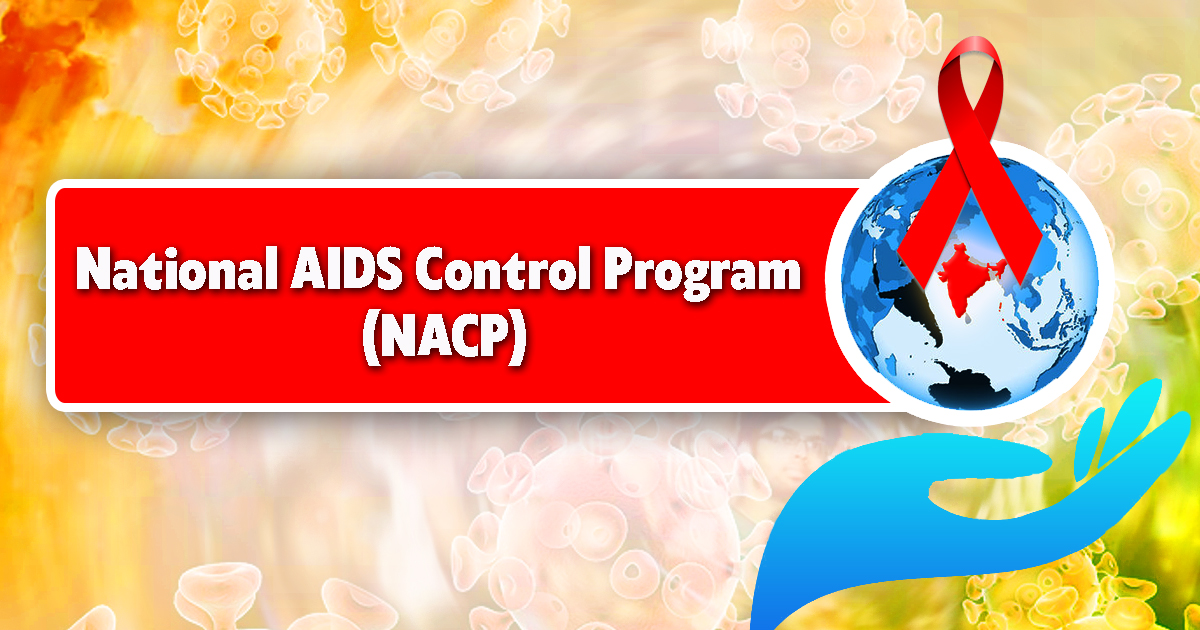
TABLE OF CONTENTS
1. Introduction
NACP is a comprehensive program launched by the Government of India to combat HIV/AIDS in the country.
It was initiated in 1992 and has undergone several phases of implementation to address the evolving challenges posed by HIV/AIDS.
2. Objectives
- Prevention of new infections
- Provide care, support, and treatment to those infected and affected by HIV/AIDS
- Strengthening healthcare infrastructure and systems for effective response
- Mitigate the impact of HIV/AIDS on individuals, families, and society
- Reduce stigma and discrimination associated with HIV/AIDS
3. Phases of Implementation of NACP
- Phase I (19921999): Focused on raising awareness, prevention, and initial steps in treatment and care.
- Phase II (19992006): Expanded interventions, including targeted interventions for highrisk groups and scaling up of testing and counseling services.
- Phase III (20072012): Strengthened prevention strategies, expanded treatment services, and increased involvement of NGOs and communitybased organizations.
- Phase IV (20122017): Emphasized a combination prevention approach, integration of HIV services with general healthcare, and increased focus on key affected populations.
- Phase V (20172024): Launched with the aim of achieving the ambitious target of ending the AIDS epidemic in India by 2030. Focuses on accelerating prevention, testing, treatment, and care services.
4. Key Components of NACP
1. Prevention: Promoting awareness, condom promotion, behavior change communication, prevention of parent to child transmission (PPTCT) services.
2. Testing and Counseling: Increasing access to voluntary counseling and testing services (VCTC), strengthening linkages with treatment services.
3. Treatment: Providing antiretroviral therapy (ART) to HIVpositive individuals, ensuring adherence to treatment protocols, and monitoring treatment outcomes.
4. Care and Support: Offering psychosocial support, nutritional support, and palliative care services to people living with HIV/AIDS (PLHIV) and their families.
5. Capacity Building: Training healthcare providers, counselors, and community workers to deliver HIV/AIDSrelated services effectively.
6. Monitoring and Evaluation: Regular monitoring of program activities, assessing progress towards targets, and making necessary course corrections.
7. Research and Innovation: Supporting research initiatives for developing new prevention strategies, treatment modalities, and vaccines.
5. Target Groups for NACP
1.HighRisk Populations: Including female sex workers (FSWs), men who have sex with men (MSM), transgender persons, injecting drug users (IDUs), and migrants.
2.General Population: Promoting awareness and prevention measures among the general public through mass media campaigns, educational programs, and community outreach.
3.Pregnant Women and Children: Ensuring access to PPTCT services to prevent mother to child transmission of HIV and providing comprehensive care to HIV positive pregnant women and their infants.
6. Achievements of NACP
- Significant reduction in HIV prevalence and incidence rates in India over the years.
- Increased access to testing and treatment services, resulting in improved health outcomes for PLHIV.
- Enhanced awareness and reduced stigma associated with HIV/AIDS through targeted communication and advocacy efforts.
- Strengthening of healthcare infrastructure and systems for better delivery of HIV/AIDSrelated services.
7. Challenges in implementing NACP
Stigma and Discrimination: Addressing deeprooted social stigma and discrimination against PLHIV to ensure their full participation in society.
Resource Constraints: Mobilizing adequate financial and human resources to sustain and scale up HIV/AIDS interventions.
Emerging Challenges: Dealing with emerging issues such as drug resistance, coinfections (e.g., tuberculosis), and new modes of transmission.
Community Engagement: Strengthening community engagement and involvement in planning, implementation, and monitoring of NACP activities.
Integration with Health Systems: Ensuring seamless integration of HIV/AIDS services with general healthcare to provide holistic care to PLHIV.
Research and Innovation: Continued investment in research and innovation to develop more effective prevention, treatment, and care strategies.
The National AIDS Control Program is a vital initiative in India’s public health landscape, aiming not only to control the spread of HIV/AIDS but also to provide comprehensive care and support to those affected by the epidemic.
 Chinmaya IAS Academy – Current Affairs Chinmaya IAS Academy – Current Affairs
Chinmaya IAS Academy – Current Affairs Chinmaya IAS Academy – Current Affairs
